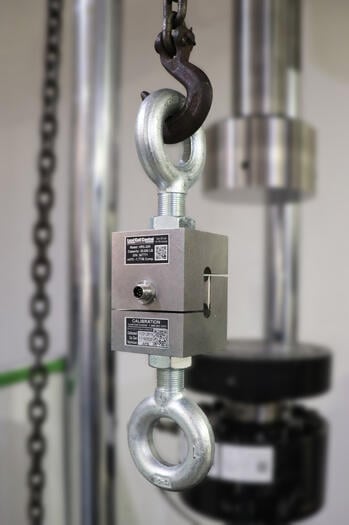How Many Load Cells Do You Need For Accurate Measurement?
April 9, 2025

Executive Summary
This white paper explores how the number and placement of load cells affect measurement precision in industrial and laboratory settings. You’ll learn why system size, load distribution, accuracy requirements, and redundancy all influence the optimal configuration, and see a real-world example of hopper scales. Armed with these insights, you can select and position the right number of load cells to achieve reliable, repeatable results.
Introduction
Accurate force or weight measurement hinges not only on choosing the right type of load cell, but also on using the correct quantity and arrangement. Whether you’re weighing a small bench-scale or a large storage silo, understanding how multiple load cells interact is critical to minimizing error and maximizing system reliability.
The Role of Load Cells in Measurement
Load cells convert mechanical force into an electrical signal, and are the backbone of precision weighing in manufacturing, transportation, and research laboratories. While individual load cells deliver high-quality readings, deploying several in concert often yields greater accuracy—particularly when loads are large, irregular, or dynamically shifting.
Key Factors in Deciding How Many Load Cells You Need
1. System Size and Geometry
- Large Structures: Large tanks, hoppers, or silos almost always require at least three or four load cells to support and measure the weight evenly.
- Compact Setups: Small bench scales or test fixtures may only need one or two cells, provided the load path is well controlled.
2. Load Distribution
- Even vs. Uneven Loads: When weight isn’t centered, additional cells help capture force at multiple points, reducing the impact of localized stresses.
- Directional Sensitivity: Because load cells measure along a specific axis, correct positioning prevents skewed readings. (See “Directional Considerations,” below.)
3. Desired Measurement Accuracy
- High-Precision Needs: Distributing the total load across more cells lowers each cell’s share, cutting the influence of electrical noise, temperature drift, and mechanical vibration.
- Error Mitigation: More cells can average out minor discrepancies, tightening overall tolerance.
4. Safety and Redundancy
- Critical Applications: In processes where a single-point failure is unacceptable—such as dosing systems or structural tests—having multiple cells ensures that a malfunctioning unit won’t cripple the entire measurement.
- Continuous Monitoring: Redundant cells allow live comparison, flagging outliers before they propagate errors downstream.
Directional Considerations: Are Load Cells Directional?
Yes—most load cells, including S-type models, are calibrated to measure forces along a straight line (tension or compression). Applying force off-axis or mounting a cell at an angle introduces bending moments that degrade accuracy and can damage the sensor. Always match the cell type and orientation to your load direction.
Diagram Callout (optional): A schematic showing on-axis versus off-axis loading can help readers visualize correct mounting practices.
Case Study: Hopper Scale Configurations
When weighing hoppers, the number of load cells depends on size, shape, and angle:
- Small, Symmetric Hoppers: Two cells—one on each side—often suffice if the design ensures even load transfer.
- Large or Angled Hoppers: Three or four cells placed symmetrically around the base help counteract uneven fill patterns and dynamic effects (e.g., material surges).
- Dynamic Environments: In processes where material is added or removed rapidly, extra cells can improve response time and stability.
Get Expert Help in Choosing the Right Load Cells for Your System
Choosing the right number of load cells and mounting them correctly are essential steps toward precise, dependable measurements. If you’re designing or upgrading a weighing system, Load Cell Central’s experts can guide you through selecting the proper configuration and hardware—ensuring your setup meets both accuracy and safety requirements.
Contact us today for a free consultation on optimal load-cell deployment in your application.